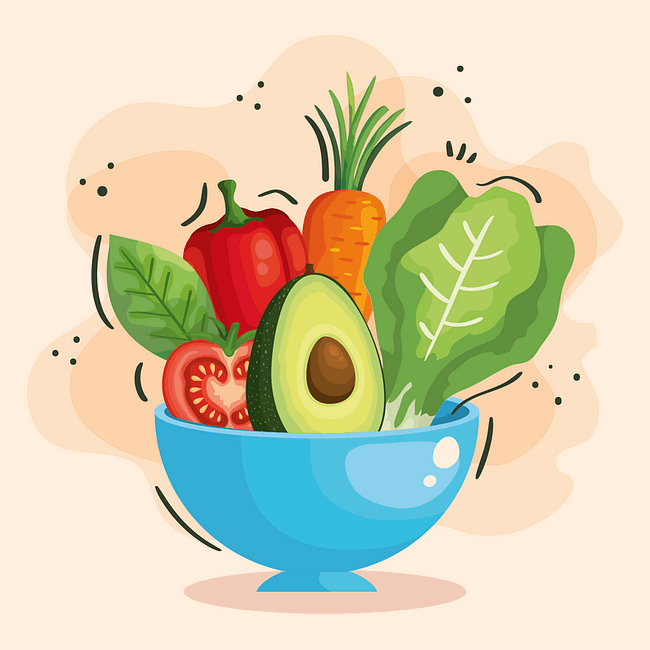You’ve probably heard of fad clean cooking diets like Whole 30, Keto, Paleo, and the Carnivore Diet, to name a few. These usually focus on eliminating foods that cause inflammation in a large percentage of the population. Some of the foods on the chopping block are sugars, grains, colors, dyes, artificial flavors, and toxic oils.
The challenge is, how can you create a workable lifestyle and rhythm around the foods that make you feel great? It’s not as simple as cutting out foods for a month or two if you want to sustain positive food changes as a lifestyle.
In this article we will cover six levels of clean cooking that will pull you out of the cycle of fad diets and into a new normal that works for you. You can decide which levels work for your body and budget.
Before we dive in, it’s essential to understand a little bit about sourcing foods.
Sourcing Foods
Before we talk about the six levels of clean cooking, it’s important to address where to source your food. Depending on where you live, access to high-quality nutrient-dense whole foods may be relatively easy to source or may prove to be very difficult. When possible, it’s ALWAYS best to source your food from local farmers dedicated to food quality.
Sourcing local gives you a connection to the people who grow the food you eat. They can explain to you exactly how they operate. You are supporting your local economy, and local farmers are usually much more dedicated to wholistic practices around growing food.
Small farmers may not be able to afford official certifications like Organic, but they may meet or exceed Organic standards without the certification. By asking them how they grow their food, and equipping yourself with the right questions to ask, you may be able to source high-quality foods at a fraction of the cost.
For instance, you can buy a quarter or a half cow that was grass-fed grass-finished directly from the farmer who raised it. You will often get a much better price when you buy directly from the farmer in bulk rather than hitting up your local chain grocery store.
Two resources for sourcing local foods are LocalHarvest.org and www.RealMilk.com.
The Six Levels of Clean Cooking
- Read labels and ditch processed foods and food-like substances
- Swap toxic fats for healthy fats
- Source high-quality meats, preferably local
- Buy organic fruits and veggies or similar quality from a local farmer
- Eliminate sugars and artificial sweeteners
- Change your cookware and storage containers
Read Labels
One of the easiest ways to immediately cut out toxins, reduce inflammation, and balance macros (the balance of fats, proteins, and carbs), is to start reading food labels. Simply look at the ingredient list. If you can’t pronounce something, if it has dyes, sugars (including high-fructose corn syrup), or if the food is processed, it’s likely harming your body and providing little to no nutritional value. If you are unsure, Google it to find out what it is and how it affects your body. If your great grandma wouldn’t recognize, it’s probably best to ditch it.
Reading labels will revolutionize the way you eat. You’ll be shocked at what is passed off as food these days.
Swap Toxic Fats for Healthy Fats
First off, it is a total myth that fats are bad for your health. Fats are a vital part of human physiology. Without fats, our bodies do not function and begin to break down. This breakdown leads to many of the health crisis facing so many around the world today.
The myths about fats were made up by people using bad “science” that have since been debunked. Check out the book, ‘The Big Fat Surprise’ by Nina Teicholz (2014), for a deep dive into the flawed data behind the ‘Seven Countries Study’ that led to the demonization of fats.
For millennia, animal fats were the primary source of fat that humans consumed. Over the last 70-years, animal fats, such as butter, cream, tallow, duck fat, and lard, have been almost entirely replaced by toxic vegetable fats like soybean oil, cottonseed oil, canola oil, and corn oils. The latter oils are unstable, go rancid quickly, and take neurotoxic chemicals to produce. These harmful oils contribute to dysfunctions in our bodies.
Visit www.westonaprice.org/know-your-fats to learn more about the role of fats and how toxic fats negatively impact the human body.
So, if vegetable oils are toxic, what type of oils and fats should we use?
- Tallow
- Lard
- Bacon fat
- Duck fat
- Schmaltz
- Fish
- Olive oil
- Avocado oil
- Butter from grass-fed cows
- Ghee
- Coconut oil

Source High-Quality Meats
Meat quality matters. You are what they eat. When a farmer injects an animal with hormones, antibiotics, and feeds the animal grains that cause inflammation, you inherit those chemicals and inflammation when you consume them.
Not only is low-quality meat worse for your body and the planet, but they are lower in the vitamins, minerals, and the essential fatty acids your body needs. Meat from well-raised animals that are fed a proper diet without the use of antibiotics and hormones have a nutrient-dense profile you won’t find in Walmart Special ground beef.
Organ meats are packed with nutrients but must be sourced from well raised animals to avoid toxins.
What are the characteristics of well-raised meats?
- Cows are grass-fed, grass-finished (no last-minute inflammatory grains to fatten the animal)
- Pork and bacon from pasture-raised pigs (this term is not regulated so do your due diligence)
- Look for chickens that spend most of their life out on the pasture (they need worms and bugs)
- Eggs from pasture-raised chickens
- Wild-caught low-mercury fish like Atlantic salmon, and sardines
- Lamb is usually grass-fed and is delicious
Organic Fruits and Vegetables
In today’s agricultural environment, most crops are sprayed with toxic pesticides and insecticides to protect the crop from pests that can at best reduce crop yield, and at worst, destroy a crop harvest.
Instead of practicing regenerative farming practices that increase the organic compounds in the soil and naturally protect plants, many farmers take the easy road of spraying their crops. The toxins travel with the foods all the way into your gut. These toxins are often lurking under the surface inside the fruits and vegetables you eat.

One example of a toxin commonly found in non-organic foods is glyphosate. The company that is primarily responsible for spreading this toxic compound through its products, Monsanto, recently lost a two-billion-dollar lawsuit. The lawsuit was over whether their product, Roundup, gave the plaintiff cancer. (https://www.cnn.com/2019/05/14/health/monsanto-2-billion-dollar-roundup-cancer-verdict/index.html)
These toxins are prevalent in non-organic foods and even make their way into organic foods at a much lower level through the soil, water sources, and from the wind blowing poisonous chemicals from a non-organic farm into organic farms.
Besides having lower levels of toxic chemicals, organic foods also have higher nutritional value. According to NutrionFact.org:
“Based on antioxidant phytonutrient levels, organic produce may be considered 20 to 40% healthier, the equivalent of adding one or two serving’s worth to a five-a-day regimen.”
The challenge is, organic foods can be a lot more expensive. If you can’t afford the price tag or aren’t able to find organic produce, become familiar with the Clean Fifteen™ and Dirty Dozen™ from the Environmental Working Group or EWG.
The Clean Fifteen™ are foods with the lowest pesticide levels despite being non-organic. If you must pick and choose, the produce on this list is the safest choice when buying non-organic.
The Dirty Dozen™ are foods with the highest level of pesticides. If you can’t buy these foods organic or the equivalent from a local farmer, it is best to avoid them altogether.
To learn more about The Clean Fifteen™ and the Dirty Dozen™ visit www.ewg.org.
Eliminate toxins like Sugars and Artificial Sweeteners
Eliminating toxins like sugars and artificial sweeteners for good, can be very challenging. The modern American diet is chock-full of sugars and artificial sweeteners. Because we are so used to eating sweet foods, it can be mentally draining to make the switch. However, if you are looking to make a change that is budget-friendly, this step doesn’t cost much and can have a massive impact on your health and energy.

Common sweeteners to eliminate:
- High-fructose corn syrup
- Cane sugar
- Aspartame
- Sweet’N Low
There are hundreds of refined sugars and artificial sweeteners, but www.powerinthegroup.com has compiled a good list of common refined sugars. You can find it here: https://www.powerinthegroup.com/list-of-refined-sugar-names/
So, what do you do if you want something sweet?
Here are a few sweeteners that are healthier than refined sugars and artificial sweeteners when consumed in moderation:
- Raw honey
- Organic maple syrup
- Dates (can be used in baking)
- Coconut sugar
Change Your Cookware and Storage Containers
The final level of clean cooking is to eliminate the toxins that come from cookware and storage containers. If you’ve done all the work of ridding toxins from your food, then you don’t want to be getting toxic chemicals from your cookware.
When it comes to cookware, avoid Teflon like the plague. Teflon is highly toxic. The chemicals leach into your food, especially if the pan is chipped or has gashes in it. Almost all non-stick pans are similar. If you must go for a non-stick pan, Green Pans are one of the few non-stick pans on the market that are not as toxic.
It’s best to use stainless steel, cast iron, or fully ceramic cookware. The good news is you don’t have to buy a full set. You can always start with one pan and build your collection over time.
It’s time to toss plastic containers, especially for hot foods. Glass storage containers won’t leach toxins into your foods, even if they are hot. Silicon containers and bags are superior to plastic as well.
Now your on your way!
By following these six levels of clean cooking, you’re well prepared to stave off the whims of fad diets and instead make long-term sustainable changes that will keep you feeling great for years to come!
